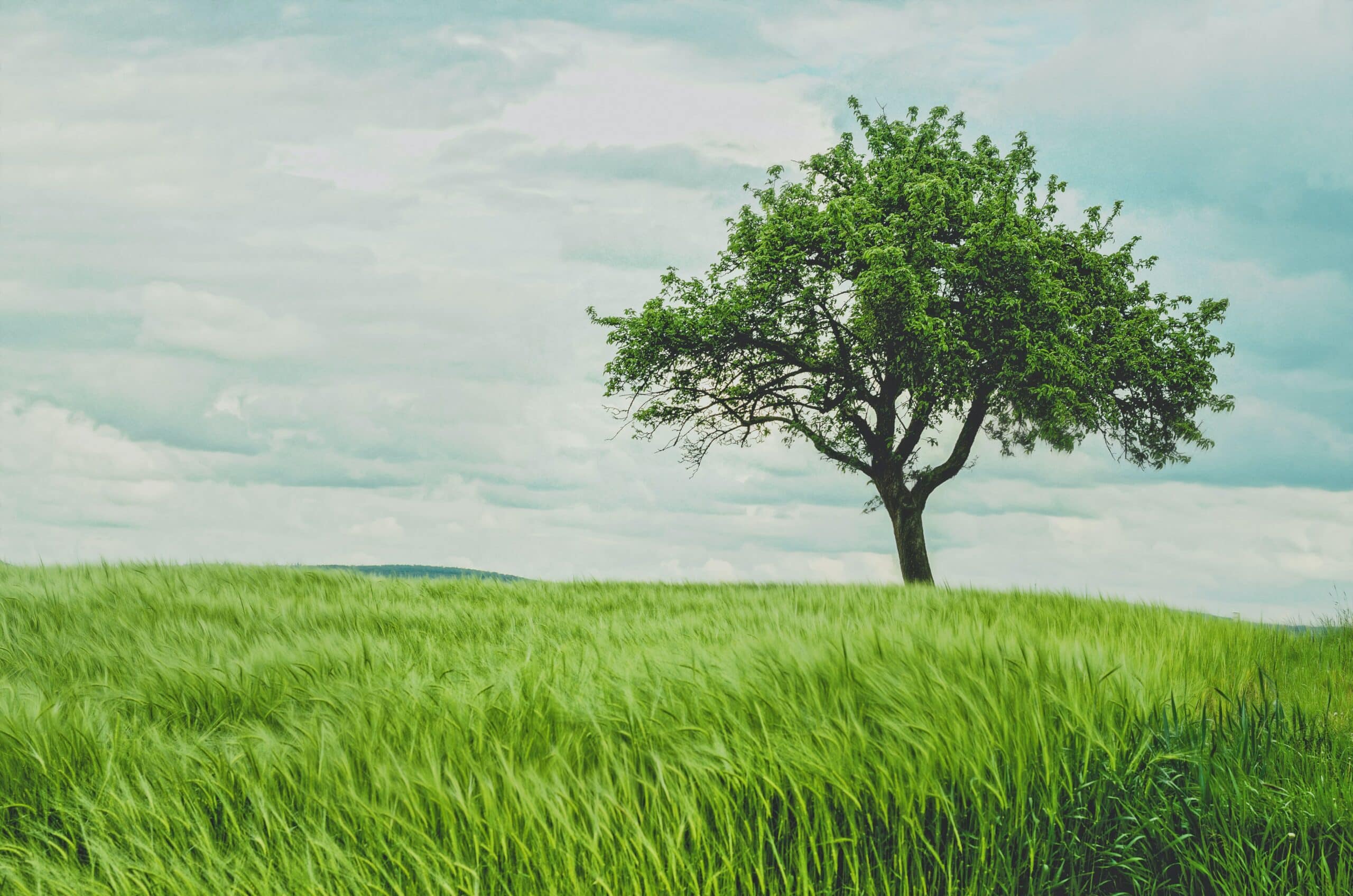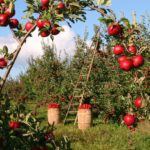Have you ever wanted to step back in time and experience the old-fashioned joy of growing figs in your own backyard? Well, with a bit of care and attention, it’s easier than you might think! In gardening as in life, a little patience can go a long way. Here’s all you need to know about planting and caring for fig trees.
Figs have been part of the human diet since Biblical times, prized for their unique flavor and versatility. They’re incredibly easy to grow yourself too – whether you’re an experienced gardener or just starting out. Whether you decide to plant one tree or an entire grove, there are a few things to consider before getting started.
First off, it’s important to pick the right location. Figs do best when planted in a sunny spot with well-draining soil that’s not too acidic. With the right conditions, your fig tree should start producing delicious fruits within just two to three years! So if you’re ready for some figgy fun this summer, read on for more tips on planting and caring for your very own fruiting fig tree.
Fig Tree Varieties
When it comes to fig trees, there is a wide range of varieties to choose from. Depending on your climate, you may be able to find a variety that will thrive in your area. Whether you live in a warm or cool climate, chances are that there is a type of fig tree that will work for you.
Many popular fig tree varieties include the Black Mission fig tree, the Celeste fig tree, and the Adriatic fig tree. Each of these varieties has their own unique characteristics and benefits. The Black Mission is great for warm climates and produces medium-sized dark purple fruits with sweet flavor. The Celeste’s small-medium fruits are good for preserves or drying because they have sweet flavor and thick skin. Lastly, the Adriatic produces large yellow-green fruits with a sweet flavor that can be eaten fresh or dried for later use.
No matter which variety you choose, it’s important to keep in mind how much space each one needs when selecting a location for your fig tree. Fig trees need plenty of sunlight and enough room to grow so they don’t become overcrowded as they mature. Choosing the right spot will ensure your fig trees get off to a good start and are well taken care of in the years ahead.
Choosing The Right Location
When choosing the right location for your fig tree, it’s important to remember that it will need plenty of sunlight and well-drained soil. A spot that gets at least 8 hours of direct sun is ideal for optimal growth and fruit production. You’ll also want to make sure that the area you select isn’t too windy, as this can cause damage to young branches and leaves.
Another factor to consider when selecting a site for your fig tree is its size. Since mature fig trees can grow up to 20 feet tall, you’ll want to pick an area with plenty of room for it to spread out. If you plan on planting multiple trees, be sure to leave enough space between them so they have room to grow without becoming too crowded.
When looking for the perfect spot, keep in mind that fig trees prefer warmer climates and may not do as well in cooler areas. If you live in an area with colder winter temperatures, consider adding a few inches of mulch around the base of the tree during winter months to help protect it from frost damage. With these tips in mind, you should be able to find an ideal spot for your fig tree!
Planting And Spacing
Planting and spacing your fig tree is essential for achieving optimal growth and a healthy plant. Preparing the soil correctly, factoring in the climate, and carefully considering how far apart to place the trees are all important steps to ensure success.
When planting, begin by loosening the soil around the root ball of your fig tree. This will help encourage roots to spread and grow down into the soil rather than staying clumped together at the top. Also consider whether or not you should amend your soil with compost or peat moss to improve drainage or add nutrients.
It’s also critical to factor your local climate into account when deciding where to plant your fig tree. If you live in a warmer area such as Florida, Arizona, or California, you should be able to space your trees closer together than in colder climates like New England or Michigan. Finally, leave enough room between each tree that they’re not overcrowded but still have access to sunlight and airflow.
With careful consideration of these factors prior to planting, you can give your figs a great start on their journey towards producing delicious fruit!
Watering
Unbelievably, watering is arguably the most essential factor in growing successful fig trees! Without proper and consistent hydration, these beautiful trees will not thrive. So how much water should be given?
To start off, young figs should receive a minimum of an inch of water each week. This can be done either with manual irrigation or natural rainfall. If there is no significant rain, it is best to use a soaker hose to provide deep, slow-release hydration. As the fig tree matures, it is important to increase the amount of water given each week – up to two inches during periods of growth and development.
During hot summer months, mature fig trees require even more hydration – about three inches per week – as this helps prevent fruit drop or splitting. If supplemental watering isn’t possible, laying down several inches of mulch around the base of the tree can help retain moisture in the soil. With these helpful tips in mind, any gardener is sure to have success when caring for their beloved fig tree!
Soil Preparation
Cultivating a fig tree requires more than just planting it; soil preparation is also an important step in the process. To ensure that your fig tree thrives, you must make sure the soil is suitable for the plant’s needs.
First, you should check the pH of the soil in which you plan to plant your fig tree. The ideal pH range for figs is between 6 and 7. If your soil falls outside this range, you may need to amend it with lime or sulfur before planting your fig tree.
Next, add organic matter to the soil. Compost, aged manure, and aged leaves are all great options for improving the nutrient content of the soil and increasing drainage. Work these into your soil before planting to give your fig tree a better chance of success.
Finally, once you’ve planted your fig tree, mulch around its base to help retain moisture and maintain consistent temperatures in the root zone throughout the seasons. With proper preparation and care, your fig tree will have everything it needs to thrive!
Mulching
Mulching is like a blanket for the fig tree’s roots, wrapping them up in a warm embrace and providing extra protection for the coming winter. This layer of organic material can also help retain moisture in the soil and keep weeds from competing with the tree for resources. In this way, it symbolizes nurturing care and security for its beloved fig tree.
When mulching around the fig tree, it’s important to use an organic material rather than inorganic material. A good choice is wood chips or shredded bark. Spread a 3-inch layer evenly over the area where you’ve planted your fig tree, taking care to avoid piling it against the trunk itself as this can cause rot or disease. Keep mulch at least 6 inches away from the trunk at all times.
This simple step of mulching should not be overlooked on your journey to growing healthy, delicious figs! It doesn’t take much effort but can go a long way in keeping your treasured fig tree safe and sound until harvest time comes around again. With proper mulching, you’ll soon be enjoying juicy fruits of your labour!
Fertilizing
Fertilizing is a critical part of growing figs, and should not be overlooked. It’s an essential step in providing the nutrient-rich environment that this fruit tree needs in order to thrive. Like a hummingbird drawn to a flower, proper fertilization will attract lush foliage and sweet fruits to your garden.
To begin, it’s important to understand what kind of fertilizer works best for fig trees. An organic fertilizer applied once or twice each year is recommended since it slowly releases nutrients over time rather than all at once. Additionally, using bone meal and compost can also create beneficial effects for the soil.
When applying fertilizer, be sure to spread it evenly around the tree’s base and water it in well afterwards so that the roots can absorb the nutrients. As with any garden task, consistency is key here – when done correctly your fig tree will thank you with abundant harvests! Moving forward, regular pruning is also important for promoting healthy growth and harvesting delicious fruits from your fig tree.
Pruning
Pruning fig trees is a critical part of cultivating these delicious fruits. Properly pruning the trees can help preserve their health and promote growth, while improper pruning can cause significant damage. By comprehending the correct way to prune your tree, you’ll reap the rewards of a bountiful harvest.
Firstly, it’s important to note that figs don’t need much regular pruning, unless for aesthetic or management purposes. However, when required, it should be done in late winter or early spring before the new growth begins. When trimming branches, aim to remove them near the base and avoid leaving stubs as these can become diseased or attract pests. Secondly, strive to maintain an open center structure when pruning to ensure good air circulation and light penetration throughout your tree’s canopy. This will enable it to develop strong branches and desirable fruit shape more efficiently. Lastly, try not to remove too many branches at once as this may shock your tree and slow down its growth rate. To be safe, consult a specialist if you’re unsure about how much pruning is necessary for your particular fig tree species.
These tips will help you successfully tend to your fig tree by providing it with adequate sunlight and airflow while ensuring proper balance of nutrients in its soil – making sure that each season brings with it a healthy harvest of sweet treats!
Controlling Weeds And Pests
Tending to fig trees can be a labor of love – and one that pays off in spades! Controlling weeds and pests is essential for the health of these trees, so it’s important to take steps to protect them.
Weeds compete with fig trees for moisture and nutrients, so keeping them at bay is crucial. A hoe or shovel can help remove larger weed patches, while a trowel or hand tool will get into the nooks and crannies where weeds hide. Mulching around the tree is also an effective way to keep weeds down, as it blocks light from reaching them.
Pests such as borers, mites, and scale can cause damage to fig trees if left unchecked. Keeping branches pruned back helps reduce their numbers by removing hiding places and creating good air flow. Spraying insecticidal soap or neem oil on affected areas will also limit pests’ access to food sources. Taking proactive measures now can help ensure healthy growth in the future!
With these steps taken care of, it’s time to look ahead towards harvesting those juicy figs…
Harvesting
Harvesting figs is an exciting part of growing them! When the fruits are ripe, they should be harvested quickly. If you wait too long to pick them, the fruits may split and become overripe. The best way to determine when a fig is ripening is to feel it. Look for a slight softness in the skin and a strong aroma. You can also check by gently tugging on the stem; if it pops off easily, then it’s time to harvest.
Once you’ve picked your figs, it’s important to handle them with care. Wash them off with cold water before storing or eating. Figs are delicate so avoid bumping or bruising them as much as possible. Also, make sure to remove any stems that remain on the fruit because they can cause spoilage later on.
Now that your figs are ready for harvesting, you’re one step closer to enjoying their sweet flavor! But don’t forget about storing them correctly – this will help keep your fruits fresh and delicious for longer periods of time.
Storing Figs
Storing figs is an important step after harvesting in order to extend the fruit’s shelf life. The best way to store figs is to leave them on the tree as long as possible before harvesting. If you’re unable to pick the fruit from the tree, place them in a single layer in a shallow cardboard box with ventilation holes. This will help keep the figs from crushing each other and allow for air circulation.
If you don’t plan on consuming all of your freshly harvested figs right away, refrigeration is recommended over freezing or canning. Place them into an airtight container and store in the refrigerator or another cool, dry place. Figs can last up to two weeks when stored properly. It’s also important to check regularly for signs of spoilage such as spots or mold.
When storing figs, it’s essential that they remain dry and not exposed to temperatures below 40 degrees Fahrenheit (4 degrees Celsius). Keep them away from direct sunlight and sources of heat as well; otherwise, they may start to shrivel prematurely and lose most of their flavor and sweetness. With these tips in mind, you can successfully store your ripe fruits for later use!
Propagating Figs
Propagating figs is an easy way to increase crop production and expand your fig tree collection. You can propagate figs through cuttings, layering, or dividing suckers from the base of the parent tree. Cuttings involve taking a stem from the parent and placing it in a moist soil. It should be placed in indirect sunlight with temperatures between 65-85 degrees Fahrenheit. Layering requires burying a low hanging branch in soil and leaving it until it takes root. Lastly, you can divide suckers which are shoots that have grown at the base of the parent tree. Cut off these suckers with a sharp shovel or spade and replant them in well-draining soil with plenty of nutrients, water, and light.
Once propagated, Fig trees require regular pruning to promote healthy growth and enhance their shape. Start by removing dead or damaged branches early on to create a nice canopy for the center of the tree. After that, maintain shape by trimming off any overhanging branches or crossing branches during late winter when they are dormant. Finally, keep an eye out for pests like aphids which can cause damage if not taken care of right away. With proper propagation techniques and regular maintenance you can have a thriving fig garden in no time!
As winter approaches, it’s important to protect your fig trees from cold weather that may damage their delicate leaves and fruit buds. Consider covering young trees with burlap sacks or sheets when temperatures drop below freezing since they are more vulnerable than mature trees. Additionally, be sure to remove any debris such as fallen leaves around your fig trees as this provides additional insulation against cold weather conditions. Taking these steps will help ensure your figs survive the winter months so you can enjoy their sweet fruits for years to come!
Winter Protection
13 out of every 14 fig trees planted in the US are grown for their fruit, making winter protection a key step to ensure successful harvests. As winter approaches, adequate preparation is necessary to protect fig trees from frost and cold temperatures. Here’s what you need to know about winterizing fig trees.
Firstly, mulch should be applied around the base of the tree as soon as temperatures begin to drop below 45°F. This will help keep moisture levels in the soil regulated and maintain a consistent temperature around the roots. Additionally, if possible, try to select an area that receives some protection from wind and other harsh weather conditions during winter months.
Finally, when temperatures reach freezing levels or colder, wrap your fig tree with burlap or other protective material such as frost blankets or tarps. This will help trap heat and provide insulation against extreme cold weather conditions. With these tips in mind, you can rest assured that your fig tree is properly protected during the colder months of the year – allowing it to thrive come springtime!
Common Fig Tree Diseases
When it comes to common fig tree diseases, knowing what to look for and how to treat them is key. Fig trees can be affected by a variety of fungal and bacterial infections that can weaken or kill the tree if left untreated. Fortunately, there are a few simple preventative steps you can take to minimize the risk of illness and keep your fig tree healthy.
First, make sure your tree is in an area with adequate drainage and is not exposed to too much water or humidity. Pruning away any dead or diseased branches is also recommended, as this will reduce the risk of infection spreading to other parts of the tree. Finally, regularly inspect your fig tree for signs of disease such as discoloured leaves, wilting or yellowing foliage, spots on the fruit and abnormal growth patterns. If you notice any of these symptoms, contact your local extension office for advice on how best to treat the problem.
Knowing what illnesses affect fig trees and taking proactive steps to protect them from harm will help ensure their health and productivity for years to come. Taking stock of potential issues now will put you in a better position when it comes time to troubleshoot any issues that may arise during the growing season.
Troubleshooting Growing Figs
Ah, the joys of growing figs! We’ve all heard the tales of grandeur; gardens bursting with sweet, juicy fruits, and trees that never seem to suffer from disease or pests. But in reality, for many of us, growing figs can be quite a tricky endeavor! Troubleshooting growing figs is an integral part of tending to your tree – so let’s get started.
First off, it’s important to remember that fig trees are incredibly susceptible to disease and pest infestations. Without regular monitoring and preventive care, your tree may suddenly find itself on the brink of death! Common diseases include root rot and black spot fungus – both of which can be treated with fungicides. Additionally, make sure to keep an eye out for pesky insects like aphids and scale bugs. These can generally be taken care of using natural insecticides or horticultural oils.
Finally, if you live in a region with cold winters, you may want to consider using winter protection methods such as mulching or wrapping your tree in blankets or burlap sacks. This will help ensure that your tree survives through the colder months unscathed! With these simple tips in mind, you should have no problem keeping your beloved fig tree healthy and thriving for years to come.
Frequently Asked Questions
What Is The Best Time Of Year To Plant A Fig Tree?
Planting a fig tree is an exciting project and can be done in any season. When deciding the best time of year to plant a fig tree, there are several factors to consider. In particular, you’ll want to take into account the temperature and amount of rainfall in your area.
In climates with mild winters, such as areas of California and the southern United States, planting can occur anytime between late fall and early spring. If you live in a region with cold winters, it’s best to wait until late winter or early spring when the last frost has passed.
If you’re looking for an ideal time of year to plant a fig tree, autumn is often considered the most suitable option. Soil temperatures tend to be warmer at this time of year which helps promote root growth. Additionally, rainfall is typically more plentiful during autumn which can help ensure that your new seedling gets enough water for healthy development.
How Long Does It Take For A Fig Tree To Bear Fruit?
Figs are a delicious and nutritious addition to any garden, but it’s important to know how long it takes for a fig tree to bear fruit. Planting the right variety at the right time of year is key. It’s like the old saying goes – ‘the early bird catches the worm’.
Fig trees take three or four years before they produce their first fruit, so patience is key! If you want to ensure a bumper crop of figs each year, it’s important to provide your tree with lots of water and sunlight, as well as plenty of fertilizer and mulch. Pruning back and removing dead branches will also help promote healthy growth.
If you’re up for the challenge and ready to start enjoying some homegrown figs in the near future, there is no better time than now to get started! A little bit of preparation and dedication can pay off with sweet rewards in just a few short years.
How Do I Tell If A Fig Tree Is Getting Enough Sunlight?
As any gardener knows, sunlight is a key factor in growing healthy plants. So how can you tell if your fig tree is getting enough? It’s time to take a journey into the world of horticulture and figure it out!
Let’s start with the basics: fig trees need at least six hours of direct sunlight per day for optimal fruit production. If your tree isn’t meeting this requirement, you may find that it produces fewer figs than expected. To check if your tree is getting enough light, stand back and observe its canopy – does it look lush and full? Or are the branches sparse? If it’s the latter, then chances are your tree isn’t getting enough sun.
On the other hand, too much exposure to sunlight can also be a bad thing. While we all want our gardens to blaze with sunshine, fig trees thrive best in areas that get partial shade during part of the day, especially in hotter climates. As Homer Simpson would say: “It’s science!” So if your fig tree is placed in an area that gets too much sun, consider moving it to a spot where it’ll get some respite from those scorching rays.
Figuring out how much sunlight your tree needs doesn’t have to be complicated; just use your eyes and common sense! Once you know what kind of conditions will make your fig tree happy and healthy, you can sit back and enjoy watching it produce delicious fruit for years to come.
What Should I Do If My Fig Tree Is Producing Small Fruit?
If you’re wondering what to do if your fig tree is producing small fruit, the answer is simple: give it more sunlight! Fig trees thrive in direct sun and need at least six hours of direct sunlight daily. But too much sun can be detrimental, so make sure your fig tree isn’t getting scorched by the sun’s powerful rays.
Like any good relationship, a healthy balance between light and shade needs to be maintained. If your tree isn’t getting enough light, its fruit will be small; if it’s getting too much light, its leaves may start to wither. So keep an eye on the amount of sun your fig tree gets and adjust accordingly.
To ensure your fig tree produces large, juicy fruits, give it plenty of water – especially during hot weather – and feed it with a fertilizer specially formulated for fruiting plants. Prune regularly to promote new growth and avoid overgrowth that could prevent sunlight from reaching the leaves and fruit. Taking these steps will ensure your fig tree produces sweet, delicious fruits each year.
How Often Should I Prune A Fig Tree?
A fig tree can be a beautiful and bountiful addition to any garden. Pruning it correctly is essential to its success. It’s like a sculptor carving a masterpiece, carefully trimming away the excess to reveal its full potential.
Pruning a fig tree encourages growth, increases air circulation, and shapes the structure of the tree. When pruning, always remove dead or damaged branches first, followed by any branches that are growing too close together. It’s also important to prune away any suckers growing from the base of the tree. Fig trees should be pruned in late winter or early spring before new growth begins.
Frequent pruning keeps the tree healthy and productive; however, it shouldn’t be done more than twice per year. After your initial pruning session in late winter or early spring, you may need to do some light maintenance throughout the summer months to remove any errant shoots or undesirable growth. But if you’ve already got a healthy and vibrant fig tree, then once per year should suffice for pruning purposes. With regular attention and care, your fig tree will reward you with plenty of delicious fruit!
Conclusion
Growing fig trees is an enjoyable and rewarding experience for any gardener. Planting a fig tree at the right time, ensuring it gets enough sunlight, and regularly pruning will ensure it produces an abundance of sweet tasting fruit. With proper care and attention, your fig tree can bear fruit in as little as two years.
Figs are a versatile crop that can be enjoyed in a variety of ways. From adding to salads to baking them into delicious desserts, the options are seemingly endless. By learning how to properly care for your fig tree, you can enjoy harvesting this flavorful treat every year.
For those looking to add a unique fruit to their garden, look no further than the delectable fig tree. With its sweet taste and easy maintenance, growing this delightful crop is sure to bring much pleasure to any gardener or food lover.





























